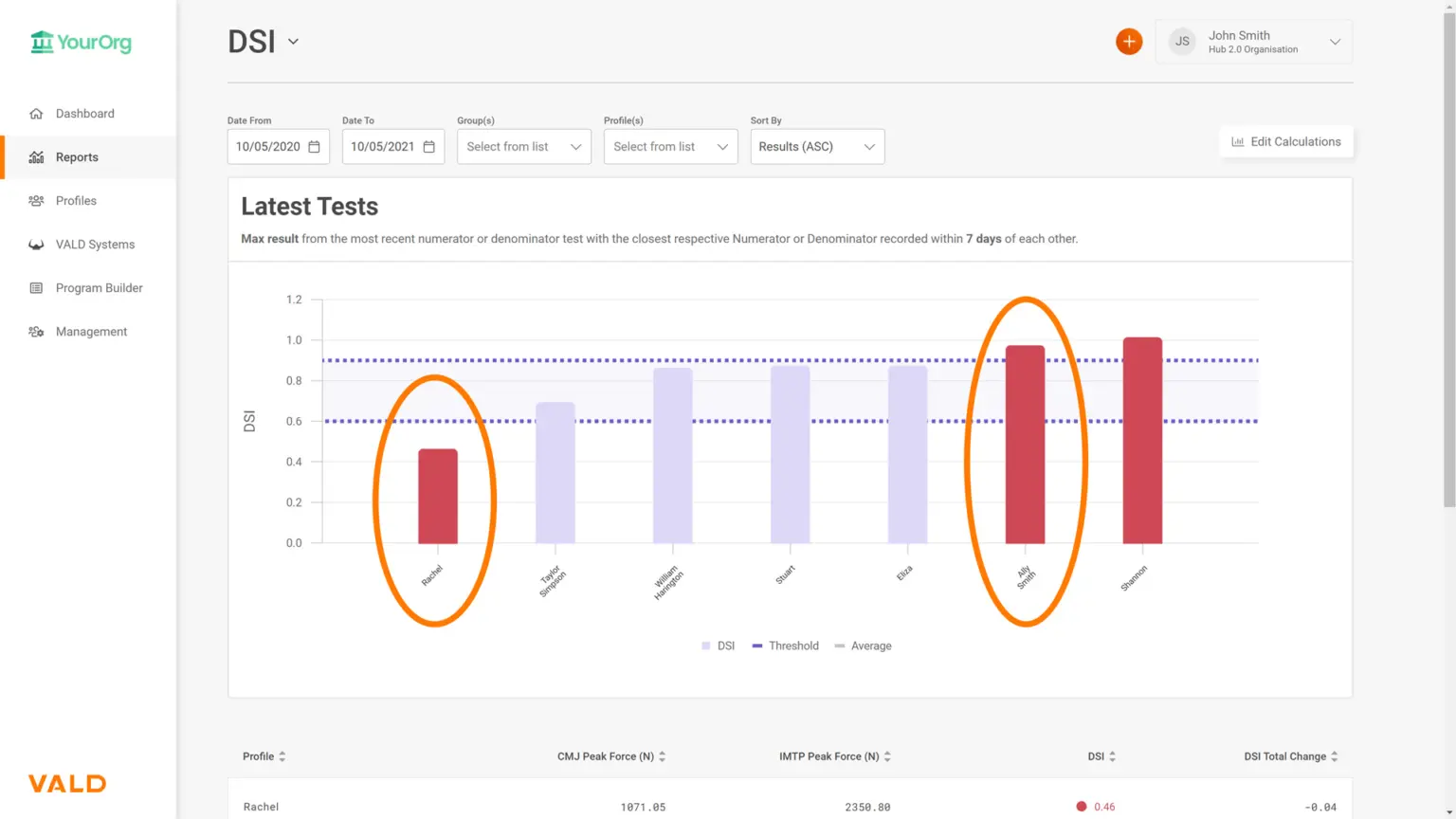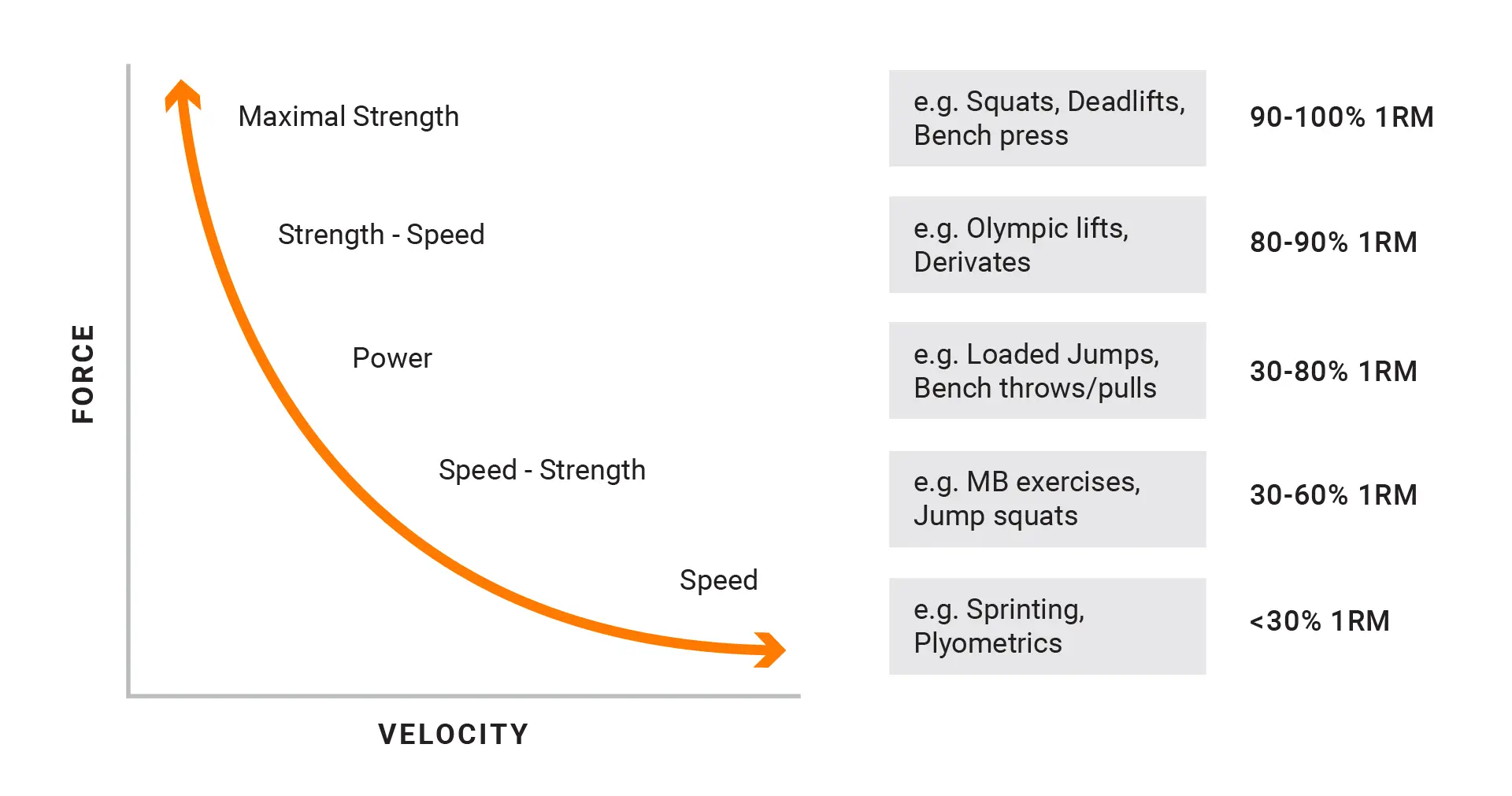USE CASE: Dynamic Strength Index
Available in:
EN
In this brief use case, we discuss how to interpret and utilise DSI results calculated from a countermovement jump (CMJ) and an isometric mid-thigh pull (IMTP) to help inform an athlete’s training program. For context, we have covered the basic concepts that underpin the Dynamic Strength Index (DSI) – read here.
It should be noted, an athlete’s DSI score reflects their physical qualities and should be interpreted with other physical quality assessments. The purpose of the DSI is to highlight where an athlete sits on a force-velocity continuum and how to best individualise their training to continually improve specific physical qualities.
The guidelines below provide a framework for understanding an athlete’s DSI result and how to propose training re
commendations based on their DSI score.
DSI Guidelines
| DSI Score | Training Recommendation |
| < 0.60 | Ballistic Strength Training |
| 0.60 – 0.80 | Concurrent Strength Training |
| > 0.80 | Maximal Strength Training |
Adapted from Sheppard et. al (2011)
In this use case we focus on two specific athletes from a small group: a high DSI athlete and a low DSI athlete.
Figure 1 shows DSI results from a small group of athletes. Rachel and Ally are highlighted, existing on opposing ends of the DSI continuum. This suggests they potentially need a different training approach –
let’s take a closer look.

Note: The tests were conducted on different days within a 7-day window. This is the time limit selected to ‘link’ tests together in VALD Hub to determine a DSI value.
Athlete 1: Rachel (Low DSI)
Rachel falls within the low DSI category, with a DSI value of 0.46. See below the raw scores from her testing data conducted using a CMJ and an IMTP. As you can see, the dynamic peak force expressed in the CMJ is relatively low when compared to the maximal force expression in the IMTP.
Training Recommendation
The training recommendation for athletes in the low DSI group is to implement a form of ballistic or dynamic strength training aligned with their current training program to increase this physical quality. Exercises that may be beneficial for training ballistic strength are exercises that require a quick stretch shortening cycle such as bodyweight plyometric exercises (e.g. box jump) or reactive plyometric exercises (e.g. hurdle jump).

Athlete 2: Ally (High DSI)
Ally has a vastly different DSI profile than the first athlete. The DSI value of 0.97 places her in the high DSI group. This suggests she can effectively utilise dynamic force capacity relative to maximal force capacity.
Training Recommendation
In this instance, the training recommendation would be different to the first athlete. Given the effective utilisation of dynamic peak force, the training recommendation focuses on increasing the total amount of force that this athlete can produce. To do so, maximal strength-focused exercises should be incorporated into the athlete’s training program, which may include back squat, trap bar deadlift or deadlift variations.

Practical Applications
Determining an athlete’s DSI value assists in the quantification of an individual’s physical capacity as it relates to the force-velocity continuum (Figure 2). All athletes will exist somewhere along the force-velocity continuum, and athletes can shift along this curve with specific training prescription, as discussed.

Summary
The DSI can provide further information in regard to an athlete’s ability to both produce and express force. It can provide an easily interpretable insight into the performance of an athlete and can be used to inform training recommendations.
A recent addition to VALD Hub allows DSI to be calculated for your athletes based on your chosen criteria. For more information refer to the VALD support site or log in to VALD Hub below.
References
Sheppard, JM., Chapman, D., & Taylor, KL. (2011). An evaluation of a strength qualities assessment method for the lower body. J Aust Strength Cond, 19, 4–10.
